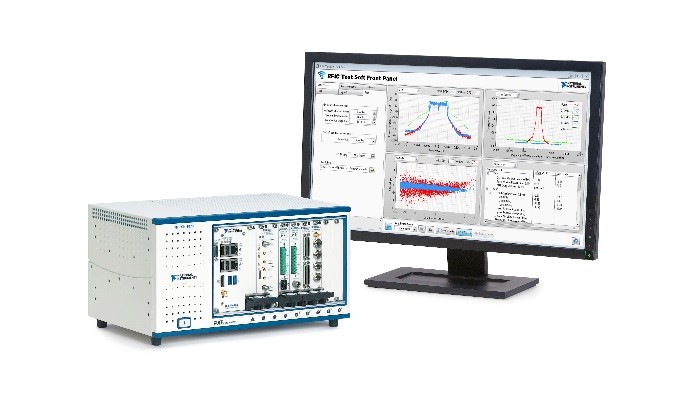Automotive Test
The increase in smart automotive ICs has driven increased voltage requirements in the test of semiconductor components for the automotive industry. Devices that operate at high voltage and high frequency are becoming more and more common in tomorrow’s smart vehicles. Additionally, the high resolution of the PXIe-5164 oscilloscope is necessary for viewing noisy bus communication to and from the engine control unit, such as SPI or CAN, and the test of other subsystems require higher voltage input requirements than traditional high-resolution solutions currently offer. The PXIe 5840 combined with mmWave front-end technology (up-convertors & down-convertors designed for 76 to 81GHz band) are used in the new ADAS test solution designed for short – and long-range radars. Engineers can program the VST’s FPGA with LabVIEW to use the ADAS test solution for radar target emulation, a technique in which test equipment emulates the radar cross section, range, radial velocity, and angle of arrival of an object. This is essential for testing a radar system’s software and hardware while carrying out long validation routines for driver assistance systems, sometimes exceeding a few tens of thousands of hours. Without reliable test emulation platforms, like the one that the second-generation VST provides, engineers would have to drive millions of km, with all kinds of obstacles and in many different scenarios, to test the possible events that would lead their vehicle’s radar and networking systems to a critical failure. Audi for example, used NI’s ADAS Test solution to test their automotive radar system by running the validation routine for 10,000 hours to comply with ASIL-D standard. “Radar is the key technology of the future, and the importance of radar system reliability requires advanced approaches to testing,” said Niels Koch, radar component owner at Audi. “With the PXI VST, the combination of wide bandwidth and low-latency software allowed us to discover an automotive radar sensor like never before—even allowing us to identify critical bugs in our radar module that we could not detect before.”


